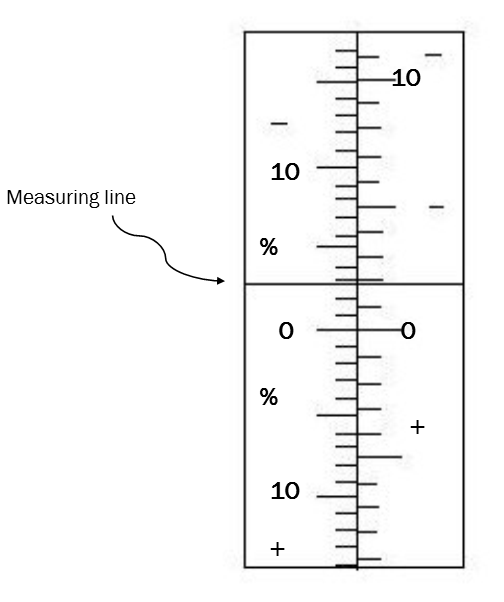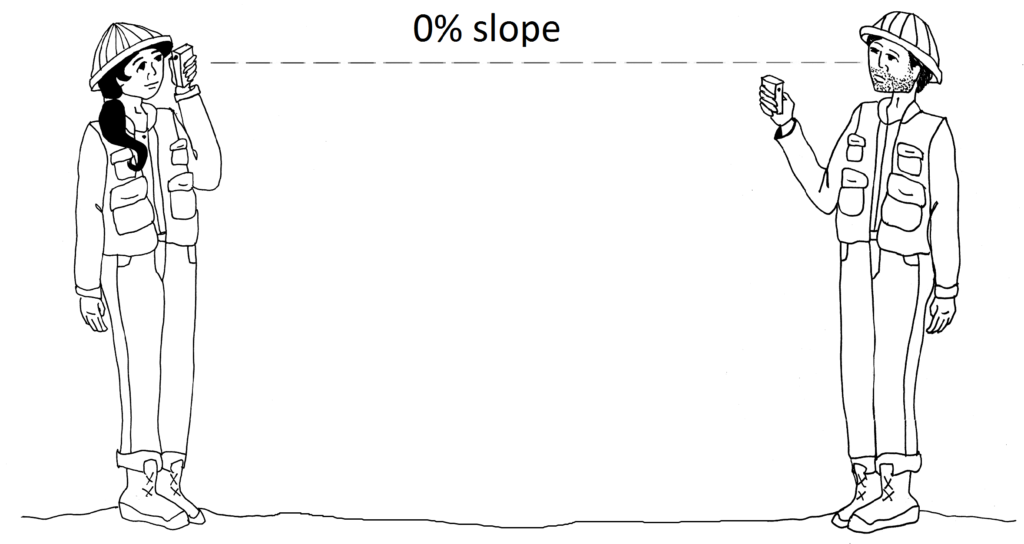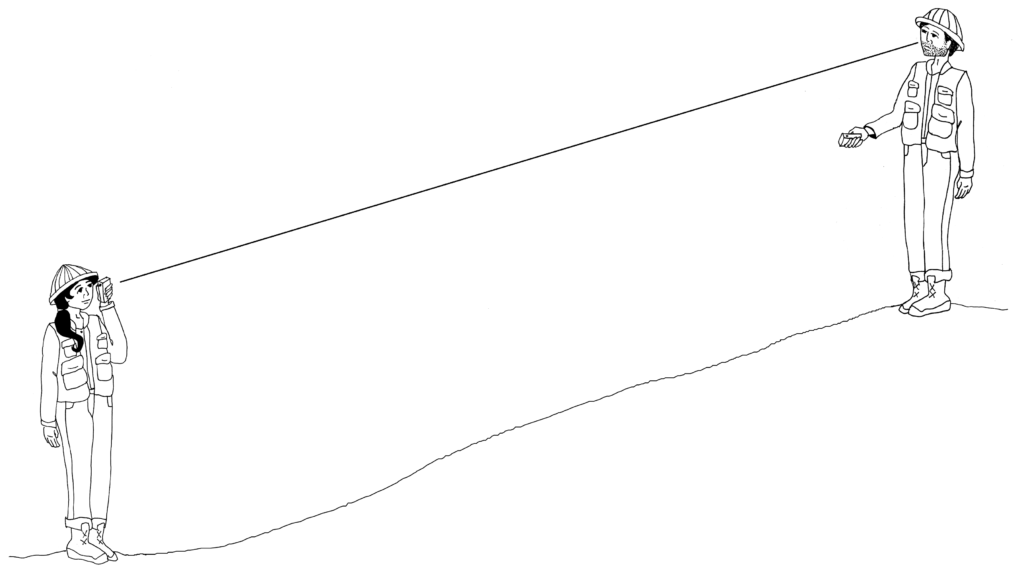1.2 Field Technique Tips for Measuring %Slope
Slope generally is measured with an instrument called a clinometer. When sighting through a clinometer, the measuring line is placed on the target, and %slope is read from the scale. Both eyes are open, as one eye reads the scale, and the other eye sights on the target (Figure 1.7).
.

1. Measuring %slope for profiles is easiest to do with a partner. First determine where 0 percent slope (eye level) is on your partner. Then use this point as the target when taking readings with the clinometer (Figure 1.8). In this way, you will be measuring parallel to the slope, mirroring the land.

2. To determine %slope, one partner walks up or down the slope to a point where a reading should be taken, such as a major change in slope. A reading is taken and recorded to the nearest percentage (Figure 1.9).

3. When working where there is a lot of brush, it may be difficult to see your partner. A brightly colored target held at the sighting point, such as a painted piece of cardboard, can substitute for your partner. Your partner’s hard hat will work in a pinch as well.
4. When working individually on forested slopes, you will have to substitute a tree for your partner. Estimate eye level on a tree that you can see clearly, and take a reading on that point. When determining average slope on a long hillside, try to pick a point as far down or up the hill as possible, to even out the slight dips and bumps on the ground.

